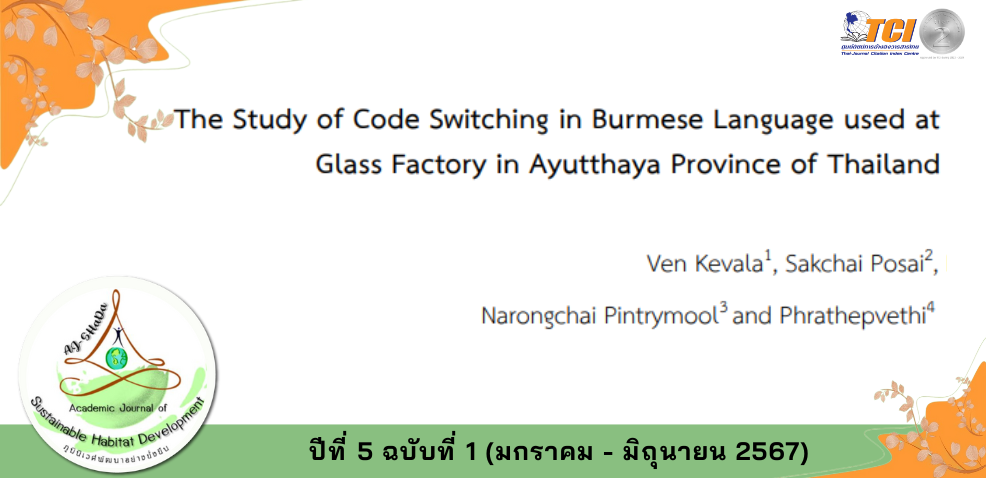The Study of Code Switching in Burmese Language used at Glass Factory in Ayutthaya Province of Thailand
Main Article Content
บทคัดย่อ
The objectives of this research were 1) To study the code-switching of Burmese language used at Glass Factory in Ayutthaya province, Thailand, and 2) To find out the characteristics of code-switching of Burmese used at Glass Factory in Ayutthaya province, Thailand. This research used a mixed method approach, he research were collected quantitative research from questionnaires to analyze the purposes and perceptions of native Burmese spoken workers in Thailand. A population were 420 of people; and, the sing group were included 201 persons.
The results were found as follows: It is nor important part. The results of in-depth interviews found that 1) The use of code-switching can reveal information about a person's background, including social status, socio-economic status, and educational background. In the workplace, code-switching may be believed by economic factors, with individuals adjusting their language based on formality, task requirements, or colleagues' and clients' expectations, providing insights into their professional background and adaptability. It's important to recognize that while code-switching gives clues about a person's background, these patterns are not absolute. People may code-switch for various complex reasons, and interpreting code-switching should be done with sensitivity, considering the diversity of linguistic practices and the potential for multiple influences on language use. 2) The people used of code-switching in the Burmese language during their daily interactions before and after the experiment was significantly different at mean from 1.184 to 3.726. As respondents deals with more code-switching in the Burmese language, it is crucial for respondents to find a good balance between using them for clear communication and keeping our unique Burmese language and culture strong.
Article Details

อนุญาตภายใต้เงื่อนไข Creative Commons Attribution-NonCommercial-NoDerivatives 4.0 International License.
เอกสารอ้างอิง
Alvarez, E. & Garcines, J. (2017). Code Switching: Boon or Bane?. International Journal of Research in Humanities and Social Studies, 4(8), 1-10.
Cabansag, J. N. (2013). Emergence of Philippine English. International Journal of English and L iterature(IJEL), 3 (1), 4.
Hongjuan Da. (2018). Teacher’s Code-Switching: A Case of Native Chinese Teachers Teaching in Thailand. (Thesis of M.A. English Language Teaching). Thammasat University, Pathum Thani Province.
Labor, J. & Liwanag, M. H. (2016). Mother or Adapted Tongue: The discursive and pragmatic effects of code International Journal of Education and Research.-switching in content-based learning, 4(11), 31-45.
Namthip Sangprem. (2015). Teacher’s Code Switching and Its Perception Among Thai Teachers and Thai Students in an Intensive English Program. (Thesis of M.A. Teaching English as a Foreign Language). Thammasat University, Pathum Thani Province.
Nang Tom Kham. (2014). A Study of Teacher's Code Switching in The EFL Classes of Two Myanmar Migrant Schools, Chiang Mai, Thailand, (Thesis of M.A. English Language Teaching). Assumption University, Samut Prakan Province.


